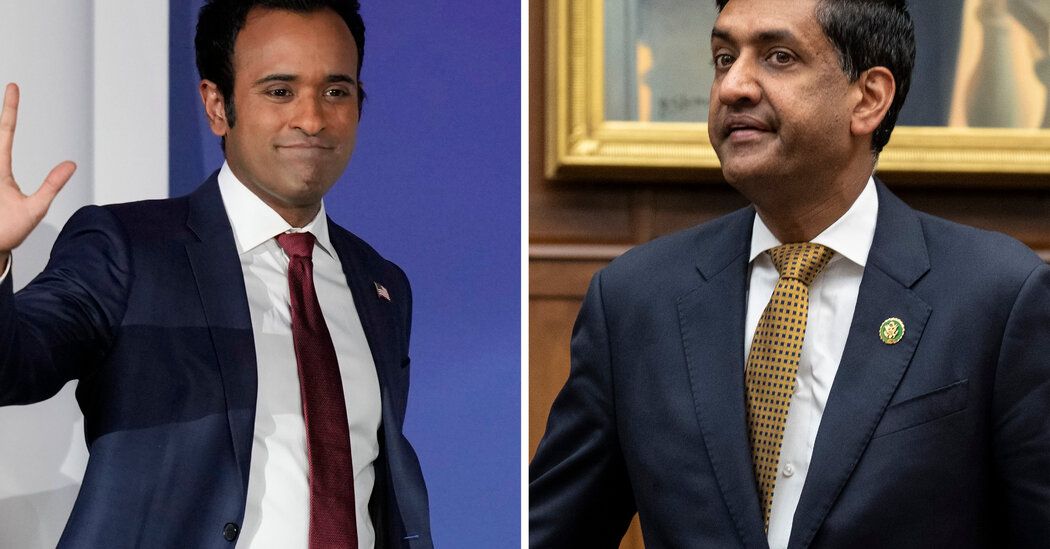Indictment Says Trump Had 6 Co-Conspirators in Efforts to Retain Power
The indictment of former President Donald J. Trump mentions — but does not identify by name — six co-conspirators who prosecutors say worked with him in seeking to overturn the 2020 election.
It is not clear why the office of the special counsel, Jack Smith, decided to seek only Mr. Trump’s indictment for now, though it is possible that some of the co-conspirators could still face charges in the weeks ahead.
Here is how the indictment describes those conspirators. The identities of the co-conspirators could not immediately be determined, but the descriptions of them appear to match up with a number of people who were central to the investigation into election tampering conducted by prosecutors working for Mr. Smith.
Among those people central to the inquiry were Rudolph W. Giuliani, a lawyer who oversaw Mr. Trump’s attempts to claim the election was marred by widespread fraud; John Eastman, a law professor who provided the legal basis to overturn the election by manipulating the count of electors to the Electoral College; Sidney Powell, a lawyer who pushed Mr. Trump to use the military to seize voting machines and rerun the election; Jeffrey Clark, a Justice Department official at the time; and Kenneth Chesebro and James Troupis, lawyers who helped flesh out the plan to use fake electors pledged to Mr. Trump in states that were won by President Biden.
Co-conspirator 1 is described in the indictment as an “attorney who was willing to spread knowingly false claims and pursue strategies that the defendant’s 2020 re-election campaign would not.”
The final report by the House select committee investigating Jan. 6 detailed the struggle between Mr. Giuliani, who was pushing Mr. Trump to promote allegations of fraud, and other lawyers for the campaign who backed away from them.
The indictment describes co-conspirator 2 as a lawyer who came up and sought to implement a plan to “leverage” Vice President Mike Pence’s “ceremonial role overseeing the certification proceeding” that was taking place inside the Capitol on Jan. 6, 2021, to “obstruct the certification of the presidential election.” That tracks closely with Mr. Eastman’s advice to Mr. Trump that he could pressure Mr. Pence into either disrupting or delaying the certification process.
Co-conspirator 3 is described as another lawyer whose “unfounded claims of election fraud” sounded “crazy” to Mr. Trump, the indictment said.
Ms. Powell was best known during the chaotic postelection period for filing four lawsuits in key swing states claiming that a cabal of bad actors — including Chinese software companies, Venezuelan officials and the liberal financier George Soros conspired to hack into voting machines produced by Dominion Voting Systems and flip votes from Mr. Trump to Mr. Biden.
The indictment says that co-conspirator 4 was a Justice Department official who worked on civil matters and plotted with Mr. Trump to use the department to “open sham election crime investigations” and “influence state legislatures with knowingly false claims of election fraud.”
Mr. Trump almost installed Mr. Clark, a top official in the Justice Department’s civil division, as the acting attorney general in the waning days of his administration after Mr. Clark purportedly agreed to support his claims of election fraud. Mr. Clark also helped draft a letter to Gov. Brian Kemp of Georgia, a Republican, urging Mr. Kemp to call the state legislature into a special session to create a slate of false pro-Trump electors.
The indictment describes co-conspirator 5 as a lawyer who helped to craft and try to implement “a plan to submit fraudulent slates of presidential electors to obstruct the certification proceeding.” That description could fit a handful of lawyers who advised Mr. Trump.
Finally, co-conspirator 6 is described as a “political consultant” who helped to devise and implement the fake elector scheme. It could apply to several people who worked closely with Mr. Trump after the election.


